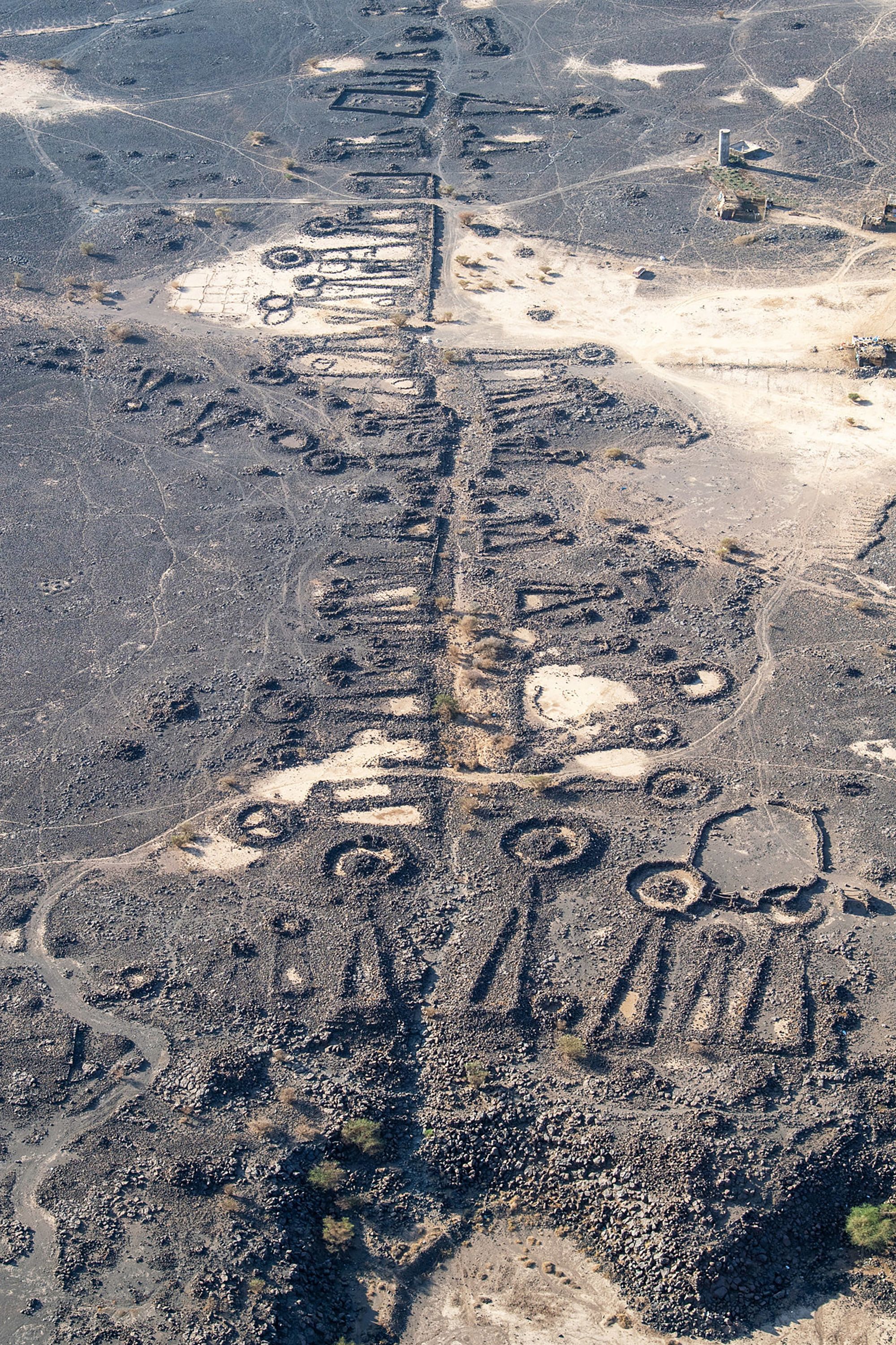
Archaeologists have discovered a 4,500-year-old highway network in Saudi Arabia lined with well-preserved ancient tombs.
Researchers from the University of Western Australia have carried out a wide-ranging investigation over the past year, involving aerial surveys conducted by helicopter, ground survey and excavation and examination of satellite imagery.
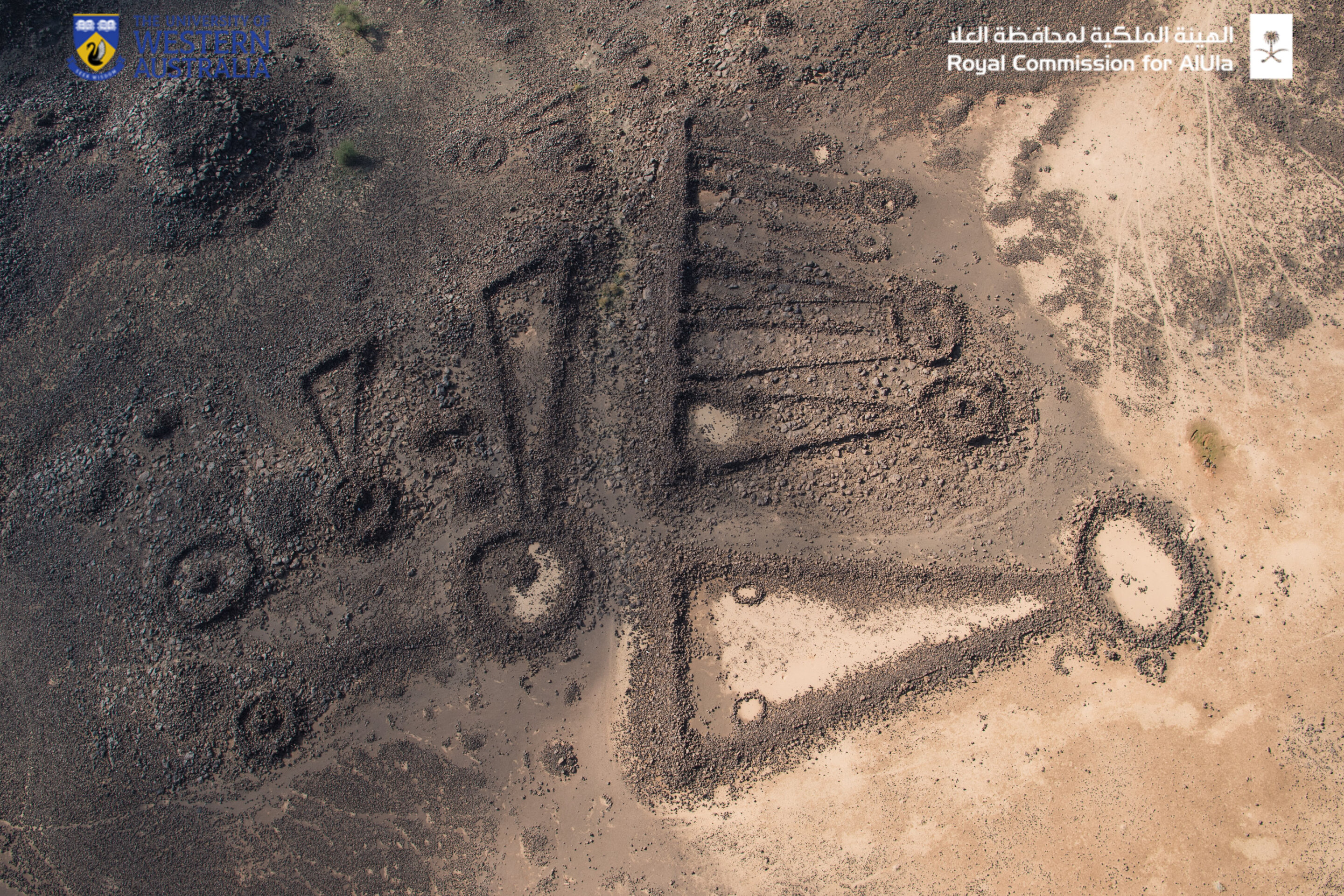
In findings published in the Holocene journal in December, they said the “funerary avenues” spanning large distances in the northwestern Arabian counties of Al-‘Ula and Khaybar had received little examination until quite recently.
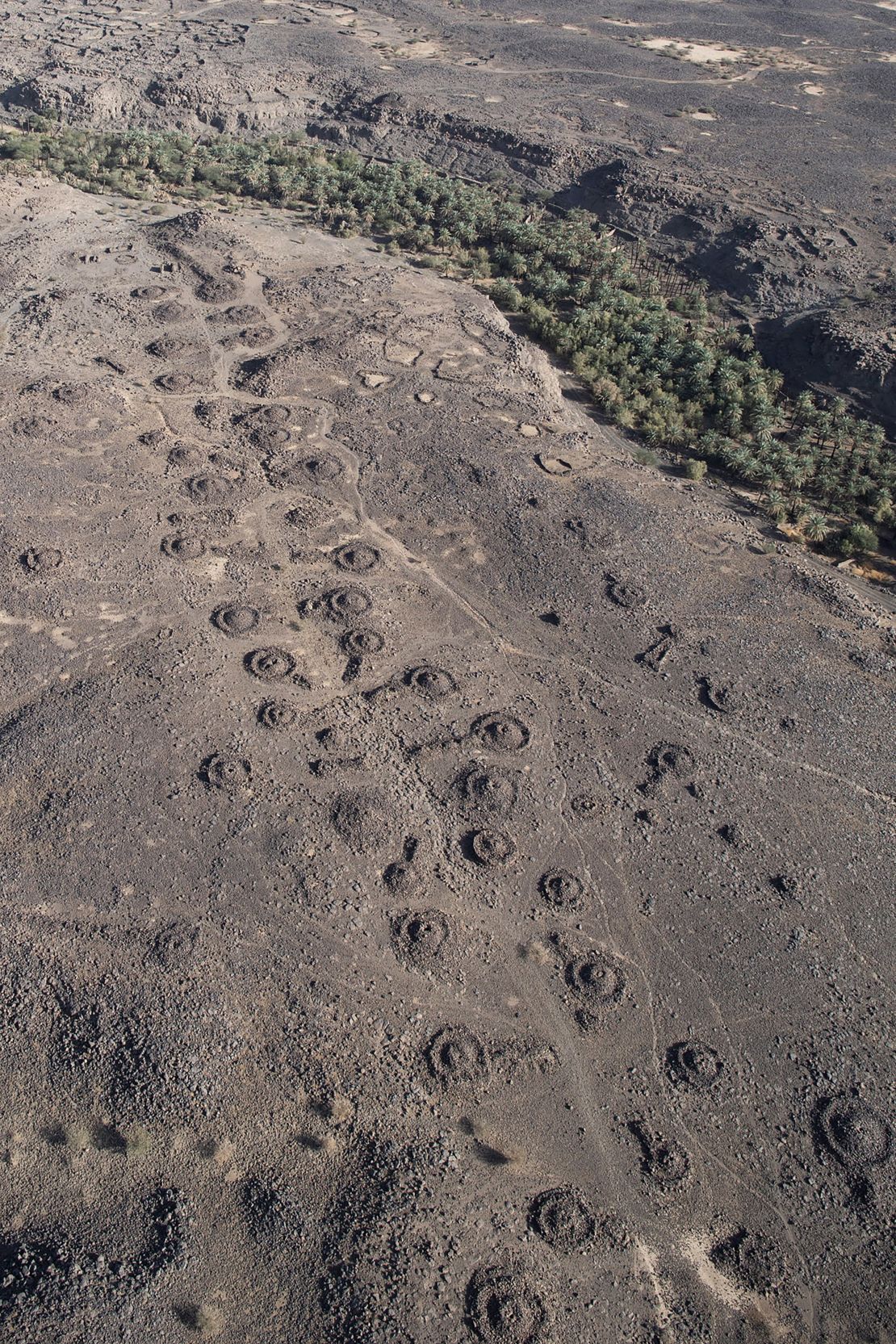
A dense “funerary avenue” flanked by Bronze Age tombs, leading out of Khaybar Oasis in northwest Saudi Arabia.
“The people who live in these areas have known about them for thousands of years,” researcher Matthew Dalton told CNN. “But I think it wasn’t really known until until we got satellite imagery that just how widespread they are.”
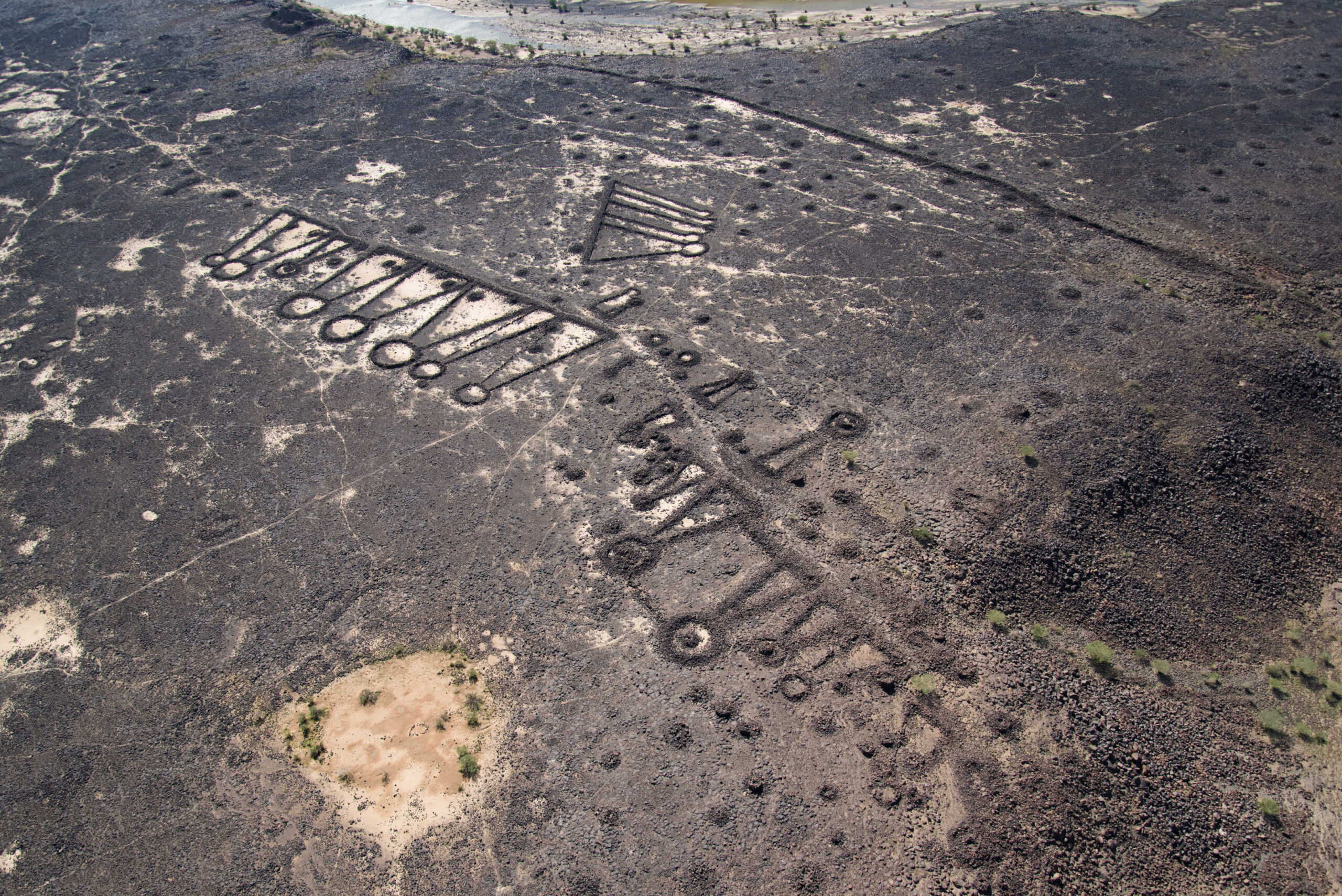
Archaeologists say they’ve found a lost 4,500-year-old sun temple in Egypt
Dalton said the funerary avenues, which he had seen from a helicopter, stretched for hundreds, “maybe even thousands of kilometers” and that the same routes were often followed by those traveling along the main roads of today.
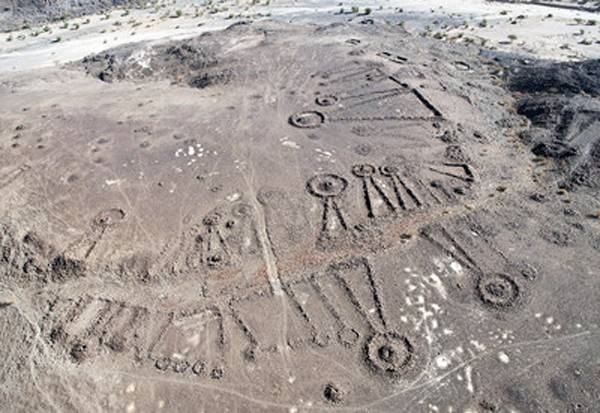
“Often you’ll find main roads tend to follow the same routes as the avenues because they tend to be the shortest route between between the two places they’re going to,” Dalton said. “And actually, in some cases, the the tombs themselves are so dense that you can’t help but walk on the ancient route itself, because you’re sort of hemmed in by the tombs.”
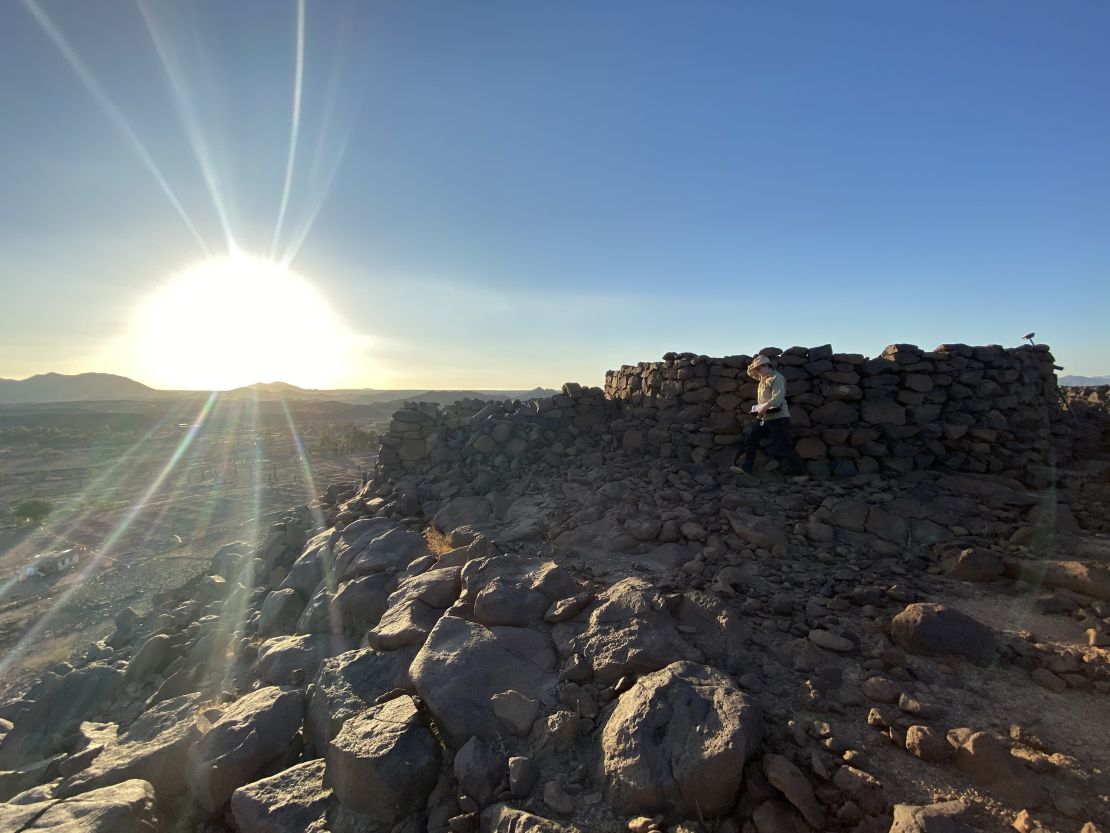
A 3rd millennium BC pendant burial on the southern edge of the Khaybar Oasis in northwest Saudi Arabia.
The tombs themselves are mostly either pendant-shaped or ring burials. Ring tombs involve a cairn surrounded by a wall of up to two meters in height, while pendant tombs have “beautiful tails.”
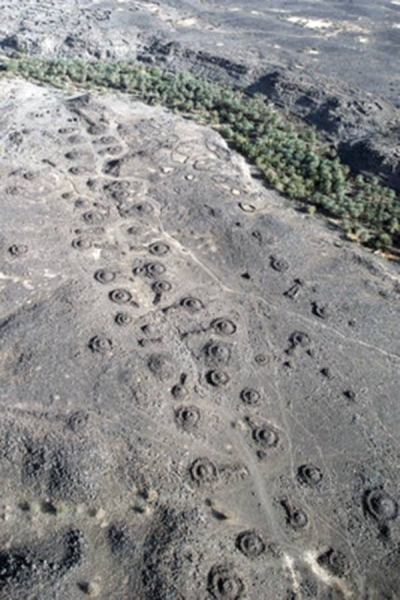
Using radiocarbon dating, the researchers determined that a concentrated group of samples dated back to between 2600 and 2000 BC, although the tombs continued to be reused until around 1,000 years ago.
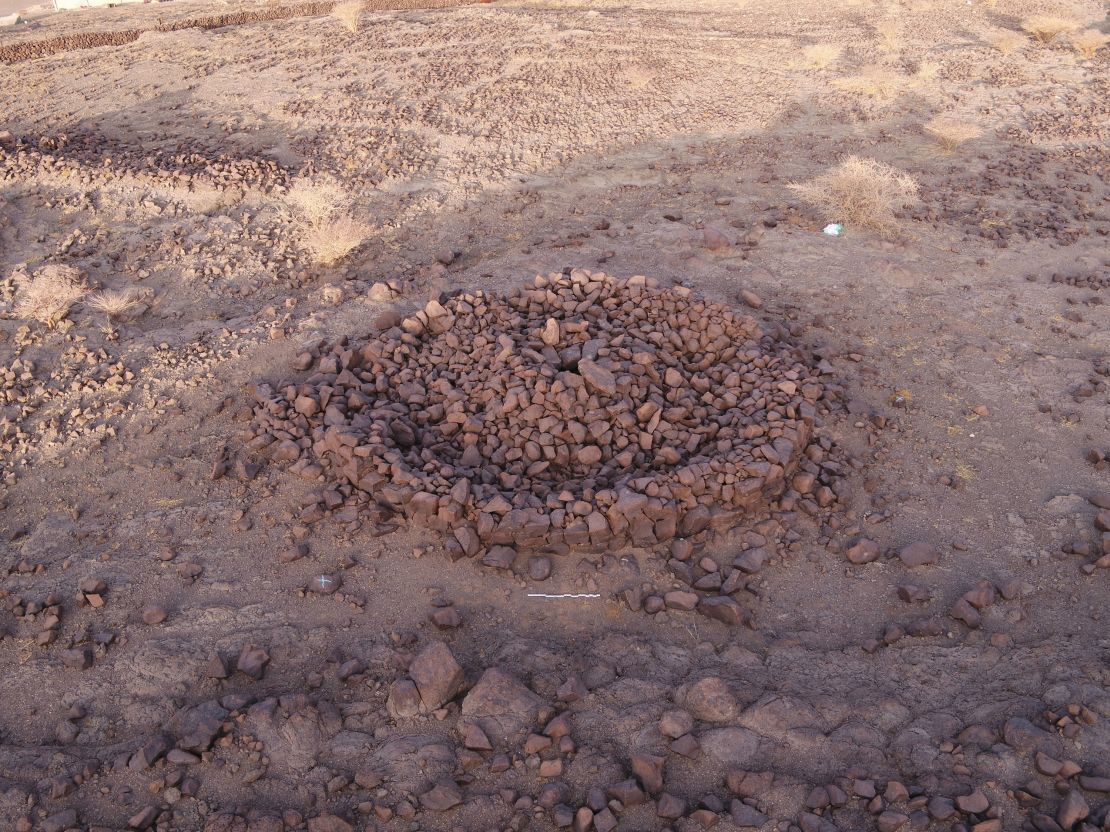
An infilled ringed cairn from the Khaybar Oasis in northwest Saudi Arabia.
The researchers think the use of the routes long preceded the tombs, and are still not sure exactly why the tombs were built along the route – although Kennedy pointed to similar customs linked to land ownership in Greece and Rome in later history.

A dense “funerary avenue” flanked by Bronze Age tombs, leading out of al Wadi Oasis near Khaybar in northwest Saudi Arabia.
The next step for the team will be to do more radiocarbon dating and go back out on the field, before analyzing their data. And more discoveries are likely to follow, with Dalton saying the avenues may even stretch across into Yemen, especially as similar tombs are found in both that country and northern Syria.